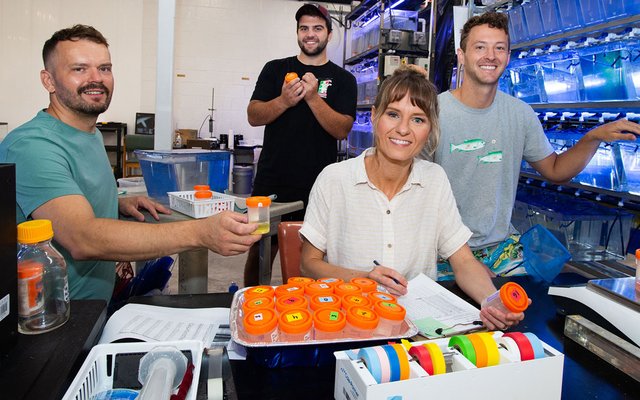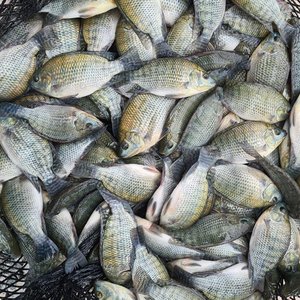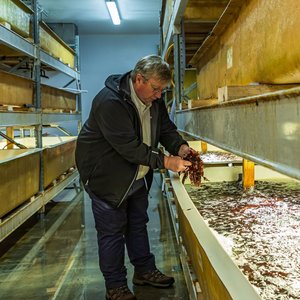Two researchers at Southern Illinois University Carbondale, Karolina Kwasek and Michal Wojno, are trying to find better ways to hatch and successfully raise yellow perch to the juvenile stage. They use research methods that combine low-tech hatchery equipment, easily copied by professional fish farmers, with creating a new feed that uses the invasive species copi, previously known as Asian carp, an invasive species that threatens Illinois waterways, as a protein source.
Yellow perch and other percids, such as walleye, are among the most difficult freshwater fish to raise in captivity. The very few aquaculture operations that even attempt to raise perch indoors report less than a 10% success rate in nursing them from the larval to the juvenile stage. Much of the difficulty stems from successfully feeding them because the newly hatched larvae are picky eaters with many limitations. An expensive, high-maintenance live feed is the standard, creating a cost-effective dry feed would revolutionize the process.
The SIU researchers are exploring ways to convert copi protein into a new feed for the larvae essentially by pre-digesting it in vitro. Mixing protein from copi with the enzyme-laden digestive tracts of processed mature perch, and then incubating the resulting slurry at temperatures and pH levels that mimic the digestive process break copi protein into molecular sizes that the larvae can absorb.
The process can only take a few hours and can be slowed down or sped up by controlling the ratio of digestive enzymes to the raw protein. The final dried product is turned into pellets.
A fish farmer can place this new food directly into the tanks holding the larvae, where the water circulation controlled by the nozzles in Wojno and Kwasek’s design also help keep the new experimental food from sinking too quickly, moving it longer horizontally and giving the larvae a chance to discover the new dish.
The methods already have raised the survival rate to around 50% with swim bladder inflation of nearly 100%. “So, this is potentially a major breakthrough for larvae culture in general,” Kwasek said.
The research will last through 2023. Success would mean greatly increasing yellow perch’s survival rates at indoor hatcheries, leading to business expansion for more aquacultural ventures and better prices for consumers.













